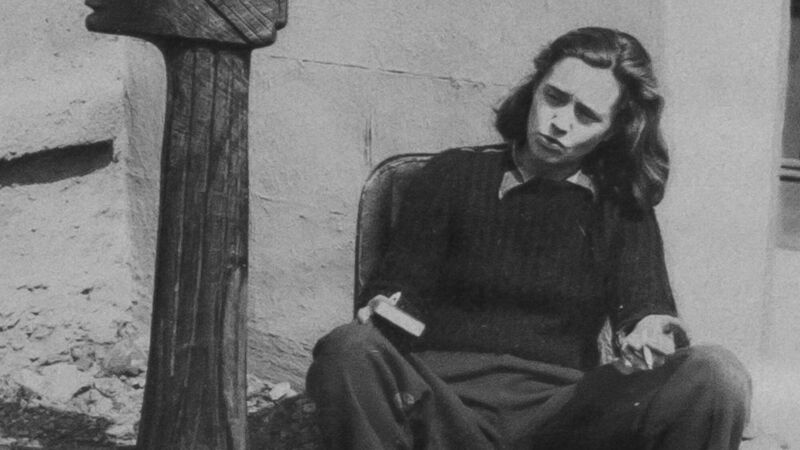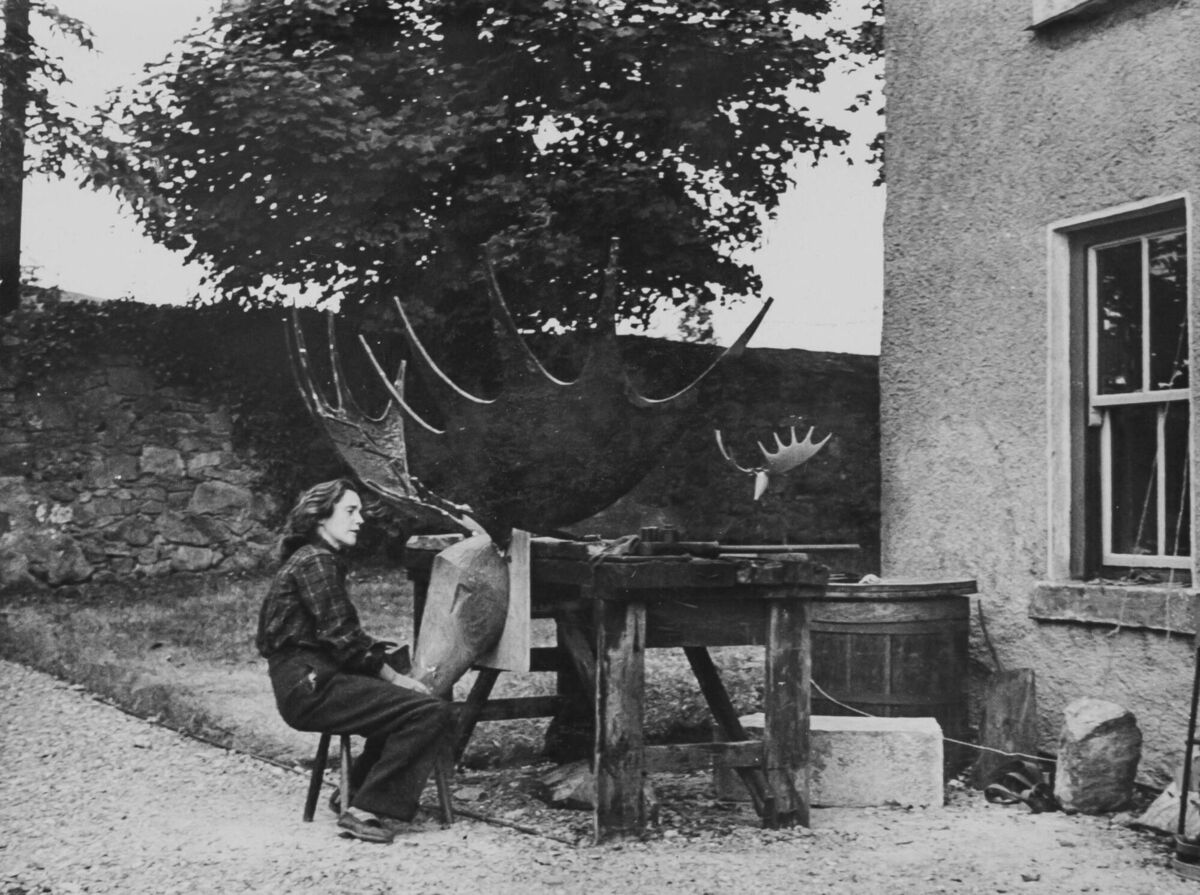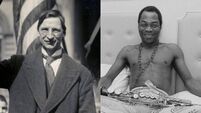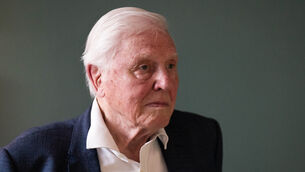Hilary Heron: Pond’s Cream model, welder, and underappreciated artist

Hilary Heron with part of her Pillow Talk sculpture (1953). Image courtesy of Estate of Hilary Heron
Hilary Heron was one of the most enigmatic Irish artists of the 20th century. A sculptor from Dublin, she died young in 1977, leaving behind a body of work in metal and wood that was quite unlike anything else being produced in this country in her lifetime. Her achievements are now being celebrated in Hilary Heron: A Retrospective at the Irish Museum of Modern Art. The exhibition is curated by Seán Kissane of IMMA and Riann Coulter of the FE McWilliam Gallery & Studio, Banbridge, Co Down.
Heron was born in Dublin in 1923, but spent much of her childhood in Coleraine, Co Derry, where her father was a bank official. Although the family returned to settle in Dublin, she retained her Northern Irish accent for the rest of her life.
Heron showed early promise as an artist, enrolling at the National College of Art in Dublin – what is now the National College of Art and Design – where she proved to be an outstanding student.
“We know this because she won the Taylor Prize three years in a row,” says Kissane. “We don't have any examples of her college work in our exhibition, but we do have her photographs of what she was making at the time. It was mainly figurative sculpture, of bodies and of animals, but done in her own particular style. Heron did some work in stone, but she mostly carved wood in those days, and she liked to carve as wide a variety of wood as she could find.”

As a young woman, Heron found work as a model. “She was very good-looking. She got a contract from an American company called Pond’s Cream, and used the money from that, and the Taylor Prize travel scholarships, to buy a motorbike. She set off on her own, and travelled all the way down through post-War Europe. She went as far as Rome, and then came back up to Paris, where she settled for a time.
“Heron was related through marriage to Samuel Beckett, and through him, she found herself right in the centre of the existential discourse that prevailed in Paris in those years. She could see what people like Jean-Paul Sartre and Simone de Beauvoir were doing in philosophy and literature, and what Alberto Giacometti was doing in sculpture. She would have got a sense of post-war Surrealism as well. That period in Paris was hugely influential for her.”
On her return to Dublin, Heron taught herself welding. “It’s pretty clear that she got the idea in Paris. The equipment you need for welding is pretty basic, and fairly readily available. But it’s hard, heavy, dirty work. So there was this contrast between a young woman who was a Pond’s Cream model in her public life, and then in her private life was prepared to travel on her own through Europe and become a welder. She was quite an unruly character.”
By 1947, Heron was showing at the Exhibition of Living Art, established by Mainie Jellett and others as an alternative to the Royal Hibernian Academy’s exhibitions. She was still experimenting with materials and styles. “There’s this piece in our exhibition called Andante,” says Kissane. “It’s a human figure that’s been hollowed out and has this rounded form, and it’s one of the pieces that may be most closely aligned to Henry Moore, who would have been very dominant in British sculpture and was also very influential in Ireland at this time.
“But that's only one of the things she was up to. For example, there’s a welded piece called Romulus and Remus, and it's completely different. It's like nothing that Henry Moore would ever make.”

Heron was chosen to represent Ireland at the Venice Biennale, alongside the painter Louis le Brocquy, in 1956. “There were two themes to the work she showed; women and birds. She did very well at Venice; a lot of her works sold, and we have tracked down about half of them. Most went to North America. They’re heavy sculptures, and would have required huge crates to transport, so we decided not to bring them back for the show.”
The exhibition at IMMA includes a photograph of the prominent American collector Peggy Guggenheim, who lived in Venice at the time, with the Irish gallerist James White at Heron and le Brocquy’s exhibition. “Sadly, Hilary never met Peggy Guggenheim. She asked the government for a grant of £50 to cover her travel to Venice. James White was the commissioner; they covered his travel and the cost of transporting the artworks, but they wouldn’t cover Heron’s travel, so she never got to the Biennale.”
By the 1960s, Heron was living on the Vico Road in Dublin, producing more abstract, minimalist work, outdoor sculptures that related to her garden. One can only speculate as to what she might have achieved had she lived longer, but sadly, she endured a long period of ill-health before her passing, aged 54, in 1977.
“When you see the photographs,” says Kissane, “you realise that she’s smoking in every single one. She was already suffering from cancer in the late 1950s and early ’60s. The last big exhibition was in 1964, and her work trailed off completely in the last six years of her life.”
After her death, Heron was more or less forgotten. One of her sculptures - called Crazy Jane, after WB Yeats’s poem - was bought by the Doyle Hotel Group, and stood outside Annabelle’s nightclub in Dublin. Many were familiar with the piece, but few were aware of who had made it.
Kissane recalls that when he first began researching a possible exhibition ten years ago, he had great difficulty locating Heron’s work. “Then Billy Shortall, a student at Trinity, did a master’s thesis on the artist. As part of that, he went through all Heron’s catalogues and all her personal journals, and he managed to track down about 60% of her pieces. When I looked at his list, I could say, I know that collector, and that one, and that one. Now we can do a show.”
- Hilary Heron: A Retrospective is at the Irish Museum of Modern Art until October 28 and tours to the FE McWilliam Gallery & Studio, Banbridge, Co Down from November 15 to February 15 2025.
- Further information: imma.ie




